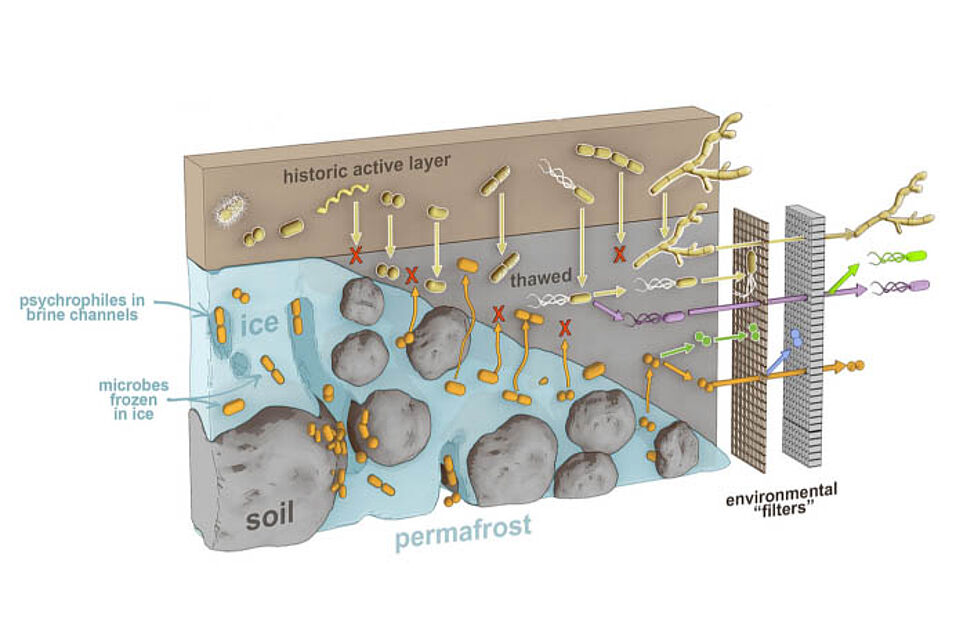Based on a review of the Arctic microbiome, permafrost microbiology, and community ecology, the article proposes that Assembly Theory provides a framework to better understand thaw-mediated microbiome changes and the implications for community function and climate feedbacks. It is predicted that on a short timescale and following high-disturbance thaw (e.g., thermokarst), stochasticity dominates post-thaw microbiome assembly, suggesting that functional predictions will be aided by detailed information about the microbiome. At a longer timescale and lower-intensity disturbance (e.g., active layer deepening), deterministic processes likely dominate, making environmental parameters sufficient for predicting function. Ernakovic et al., 2022, Global Change Biology

